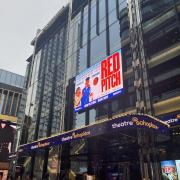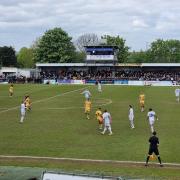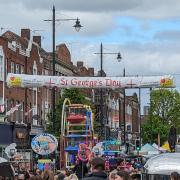
It’s likely that most people have heard the word ‘gentrification’ being tossed around, particularly in the past year when social change has brought the process into question; whether it is motivated by elitism and racism or inclusion and prosperity. In summary, gentrification is associated with renovating a neighbourhood or district so that it conforms to a specific socio-economic character. There is a tendency for communities as well as corporations to gentrify lower-income areas to generate profit and encourage business development. Naturally, the people directly impacted by gentrified neighbourhoods have debated whether gentrification is truly detrimental to local communities or actually helps create equity across districts.
As you can imagine, London has fallen victim of gentrification hugely given its diversity in each area. So, a project (via GoCompare) was conducted from 2010, until 2016, to measure how much different boroughs have been gentrified or altered. Perhaps predictably, Kensington and Chelsea fall at the top of the list, but Merton has surprisingly fallen 6th out of over 30. This list was based on how Mertoners scored in factors like salary change since 2010 (15%), percentage increase in property worth since 2004 (129%) and, funnily enough, how many coffee shops per 10,000 people in which Merton scored 6.0. It’s quite useful for us, then, to speculate whether this is a good thing or a bad thing for our locals here in Merton, or for any other borough in the top ten in our very own city.
What gentrification has produced that is beneficial for our living standards is the creation of more business diversity such as shops, retail outlets, and lots of different independent restaurants or coffee shops. Initially, areas like Wimbledon were very restricted in terms of originality or flair, but thanks to more investment in it, it is now bustling with energy. This produces an experience of community, too, and on top of that, these businesses generate income and jobs for the youth in our community. Particularly following the Covid crisis, more job opportunities in the hospitality industry will be on the rise and students who deferred for university will be able to work locally. Another advantage is that when more investment goes into neighbourhoods, they become attractive to more wealthy investors. This usually leads to better social services such as clean roads and fresh greenery that is well-maintained by the council due to enough funding. The commons all around Merton have become significantly less littered in the past decade, and have fostered wildlife as well as activities such as golf and coffee shops. That is not suggesting that ‘poorer’ neighbourhoods are inherently filthier, but that with more investment, more efficient services can be hired to work faster. Some of these social services also include more law enforcement and police distribution, often reducing crime rates in that area so that its inhabitants feel safer moving about. The gentrification of areas in such an urban city like London means that fewer people flee to suburban life as the quality of life increases in the city landscape. This is a great way to foster good real estate and increase business development.
Of course, along with this process come quite a few downsides. The largest defect is a forced cultural shift to adapt to the specific socioeconomic group that is moving into the area. Gentrification risks suppressing a neighbourhood’s individuality and all areas begin to look the same, as they are based on a cultural blueprint. Suddenly, a small, locally-owned store which used to sell traditional or original foods like herbs and spices now sells kale chips and granola. This is because the ‘gentrifiers’ conform to a sort of standardized healthy living model. The neighbourhoods that are most commonly gentrified often attract investors because of their originality but that is ironically taken away by the investors themselves, albeit likely unintentional. What can also happen as a consequence of gentrification is that the areas’ locals risk unemployment or getting poorer given that more chain brands and international stores begin investing. The small-scale, charming stores slowly disappear leading members of the original community to slowly move out. When the original members of the community leave, the district loses the flair that made it so charming in the first place.
More specifically to Merton, with the increase in property worth of nearly 130% since 2004, we have seen a huge increase in real estate prices. This has both pros and cons in itself. It generates business and assists our regional economy, while simultaneously helping real estate agents and house owners to gain profit off of their once not-so-valuable properties. The problem is who can afford to buy these properties afterwards? It is usually not the locals who lived there before there was investment, instead, it is wealthier clients only therefore slowly removing the soul of the neighbourhood by moving the people native to the area.
So, what is our solution? In a city like London, it is bound to happen more, and Merton could move further and further up the list. We must avoid large-scale corporations investing here for profit and stealing its character, so the rich don’t get richer while the locals suffer. This will continue to allow slight increases in investment to improve living standards. If the locals and newcomers can coexist, the cultural character of the area can survive and also bring a new variety of businesses, which puts gentrification in a newly utopic light.



























